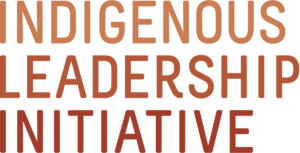Indigenous-led Conservation in the Boreal Is Key to Climate Leadership
The Boreal Forest in Canada: A Giant Shield Against Climate Change
The Boreal Forest serves as a giant shield in the fight against climate change. As the largest intact forest left on the planet, it holds enormous amounts of carbon buried deep in its landscapes.
The Boreal Forest in Canada holds about 12 percent of the world’s land-based carbon reserves. That’s the equivalent of up to 36 years’ worth of global carbon emissions from burning fossil fuels.
The boreal holds twice as much carbon as the world’s tropical forests per hectare.
Most forests store carbon in living trees and plants, but the boreal has something tropical forests don’t: long-term storage. Ninety-five per cent of carbon in the boreal is held in soil, peatlands, and permafrost—features that accumulate carbon over thousands of years.
The boreal in Canada accounts for 25 percent of the world’s remaining intact forest—more than the Amazon Rainforest. By conserving large areas, we can keep carbon in place and help the world reduce the threat of unchecked climate change.
Indigenous-led Conservation Sustaining Massive Carbon Storehouses
Indigenous Nations are leading the biggest, most ambitious projects for conserving lands in Canada—including some of the richest carbon storehouses across the boreal.
West of Hudson Bay, for instance, four First Nations have come together with support from Inuit neighbors to propose the Seal River Watershed Indigenous Protected Area. The watershed holds 1.7 billion tonnes of carbon—equivalent to 8 years’ worth of ghg in Canada. And nearly 70 years’ worth of annual emissions from Canada’s cars and light trucks (2018 levels).
Momentum Is Building
Indigenous Nations have led the creation of the majority of new protected areas in Canada in recent years, including Edéhzhíe Dehcho Protected Area/National Wildlife Area in 2018 and Thaidene Nëné Indigenous Protected Area in 2019.
Scores of other Nations are advancing Indigenous Protected and Conserved Areas (IPCA).
Over 25 proposals were funded by the federal government and more than 20 capacity investments were made in 2019 as part of Canada’s strategy for meeting biodiversity commitments.
In August 2021, the Government of Canada announced $340 million in new funding over five years to support Indigenous-led conservation and stewardship, including more than $173 million for Indigenous Guardians and over $166 million for IPCAs.
Indigenous-led Climate Research and Monitoring
Indigenous-led land stewardship not only conserves lands and maintains carbon storehouses. It also offers frontline management of climate impacts and provides knowledge to shape climate policy.
Over 70 Indigenous Guardians programs care for lands and waters on behalf of their Nations. They combine ancestral knowledge and Indigenous law with western tools to track changes in water temperature, animal migration, permafrost, and other impacts.
Guardians’ knowledge informs policies. The Heiltsuk Guardians, for instance, track climate impacts on Dungeness crab by collecting data and talking with knowledge keepers. Their research shapes the Heiltsuk Nation’s decisions on harvest limits and protected areas.
In many locations, Guardians are the only ones tracking climate change. Crown governments don’t have the resources to put field stations in remote areas, but Guardians are already on the ground. Their research plays a central role in helping mitigate climate impacts in the North.
Some Guardians also help manage increasing risk of wildfires. They draw on Nations’ knowledge and laws to reduce risk, preserve forest health, and make communities more resilient in the face of climate change.
Photo credit: Ducks Unlimited Canada


